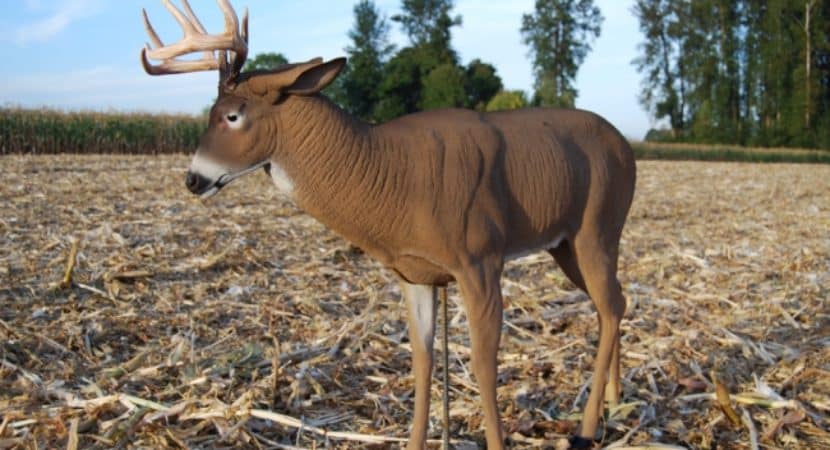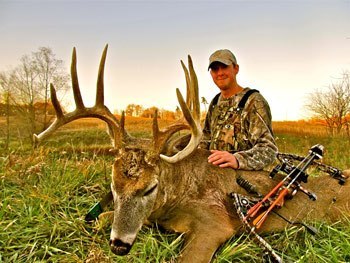 The best deer decoy may not help unless you put a little thought into how to use it.
The best deer decoy may not help unless you put a little thought into how to use it.
Sure, you could set it out, get into your stand or blind and wait. But thats not likely to yield much results.
Why not learn a few tips and employ a strategy? Lets take a look 7 different ideas to get your started with your stand-in.
Contents
I. Use the deer hunting decoy
The old adage practice makes perfect is appropriate. If you are a hunter who bought a decoy before the season started but have yet to use it, youll probably want to practice.
Using a deer hunting decoy can be an effective strategy to attract bucks during hunting season. Here are some tips to maximize your chances of success with a deer hunting decoy:
- Choose a Realistic Decoy:
- Opt for a decoy that closely resembles local deer in size, color, and posture. Realism is key to convincing bucks that it’s a potential mate or competitor.
- Consider the Rut Phase:
- Different phases of the rut (mating season) require different decoy postures. Early on, a doe decoy may attract bucks looking for a mate. Later in the rut, using a buck decoy can draw in territorial bucks.
- Scent Control:
- Practice scent control to minimize human odors on the decoy. Bucks have a keen sense of smell, and any foreign scent can alert them to potential danger.
- Use Estrus Scent:
- Apply estrus scent (doe in heat) to the decoy to make it more enticing. This can stimulate a buck’s interest and bring them in closer.
- Strategic Placement:
- Set up the decoy in a location that provides good visibility for approaching bucks. Place it within your effective shooting range, ideally with the wind in your favor.
- Movement:
- A slight, realistic movement of the decoy can make it more convincing. Consider using a motion decoy or attaching a string to create subtle movements.
- Blend with Surroundings:
- Camouflage the decoy well within the natural surroundings. Avoid placing it in open areas where it may look out of place.
- Use Decoy Attractants:
- Employ other attractants like rattling antlers or grunt calls to enhance the realism of the decoy setup. This combination can be particularly effective during the rut.
- Timing Matters:
- Choose the right time to use a decoy. During the peak rut, bucks are more likely to respond to decoys as they actively seek mates.
- Monitor Wind Direction:
- Always pay attention to the wind direction. Place the decoy downwind from your position to minimize the chances of bucks detecting your scent.
- Patience is Key:
- Give the decoy setup time to work. Bucks may take some time to approach, especially if they are cautious. Be patient and avoid making unnecessary movements.
- Safety First:
- Be cautious about using decoys in areas with other hunters. Ensure your decoy is visible to you but not to other hunters who may mistake it for a real deer.
Remember that success in deer hunting depends on a combination of factors, and using a decoy is just one element of a broader strategy. Adapt your approach based on local conditions and the behavior of the deer in your hunting area.
II. Visibility counts
A decoy hidden in the timber wont do you much good. Deer need to be able to see your decoy from a distance.
When they can see it from afar, they will be more inclined to come check it out.
Common locations include ridge tops, clear-cuts, at the field edge. High points make good locations.
Although its possible to use decoys in the woods, the deer should be able to see your stand-in from afar. If they dont, they might get spooked when they suddenly see it up-close.
III. Get noisy
Even with a good location, bucks may not flock to your stand-in. You may need to persuade the deer to come your way.
Bleat, rattle, grunt make noise! If youre noisy, the buck will be curious about the source. It may spot your decoy.
If it spots it, it may come check it out, which could put the buck in range for an ethical shot.
Besides, it can be oddly entertaining making those sounds.
IV. Placement counts
A good starting point is placing the decoy upwind of the blind by about 20 yards or so, but the type of decoy you use will determine placement.
Buck decoys: Have the buck decoy face your stand.
A buck will want to keep its eyes on the head of a buck decoy. (The head is where the deers weaponry is located.)
Generally, they will circle downwind of the stand-in, then face it directly.
This will put the buck between you and the decoy.
Doe decoy: Have the doe decoy face way from your stand.
Bucks wont see a challenge with a doe, so it generally wont keep its eyes on the stand-in. The buck will be interested in the does hind end.
V. What stinks?
You know that human odor wont attract deer. So, you decoy should have no human scent on it. When you touch the stand-in, use gloves and use an odor neutralizer.
Rather than hose the decoy down in deer attractant, try spreading a little scent such as doe-in-estrus, deer urine, or tarsal gland scent to a towel or cotton ball and place it on the ground. Another option is to wrap the scented fabric wrapped around a stick, which you drive into the ground.
VI. Timing
You may have a one or two plots of land that you hunt. Rather than use the decoy early in the season, wait until later in the season.
You dont want to condition the buck so that it ignores the stand-in.
A good time to start using the decoy is when the does first go into estrus. Few bucks will ignore the stand-in.
If you have a lot of hunting ground, the conditioning risk is limited.
VII. Setup: Buck or doe?
Use your scouting information and the time of year to determine what is driving the bucks behavior. Then, choose between the right decoy that suits the animals interests.
Examples: Is the bucking looking to mate, socialize, dominate another buck, feed near others?
For an animal looking to mate, the obvious choice is a doe decoy. For a young, aggressive buck, a buck decoy may be the answer.
A strategy helps.


Reply